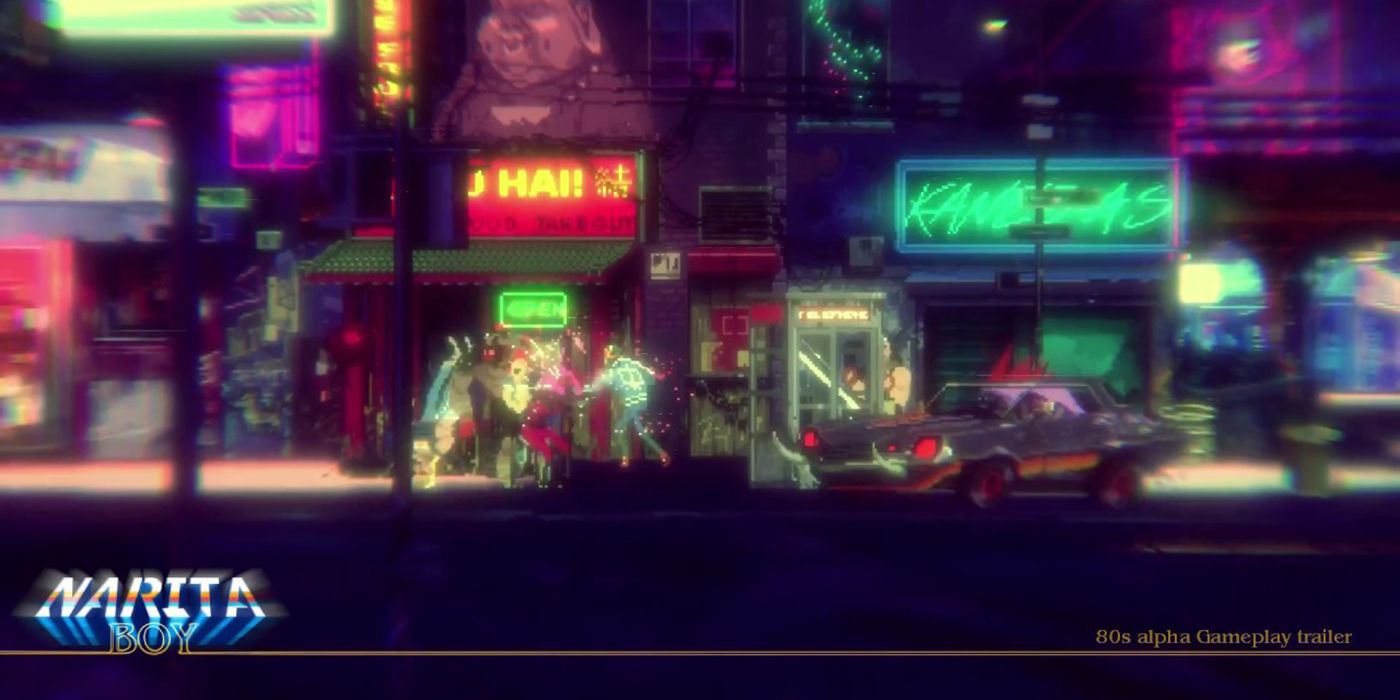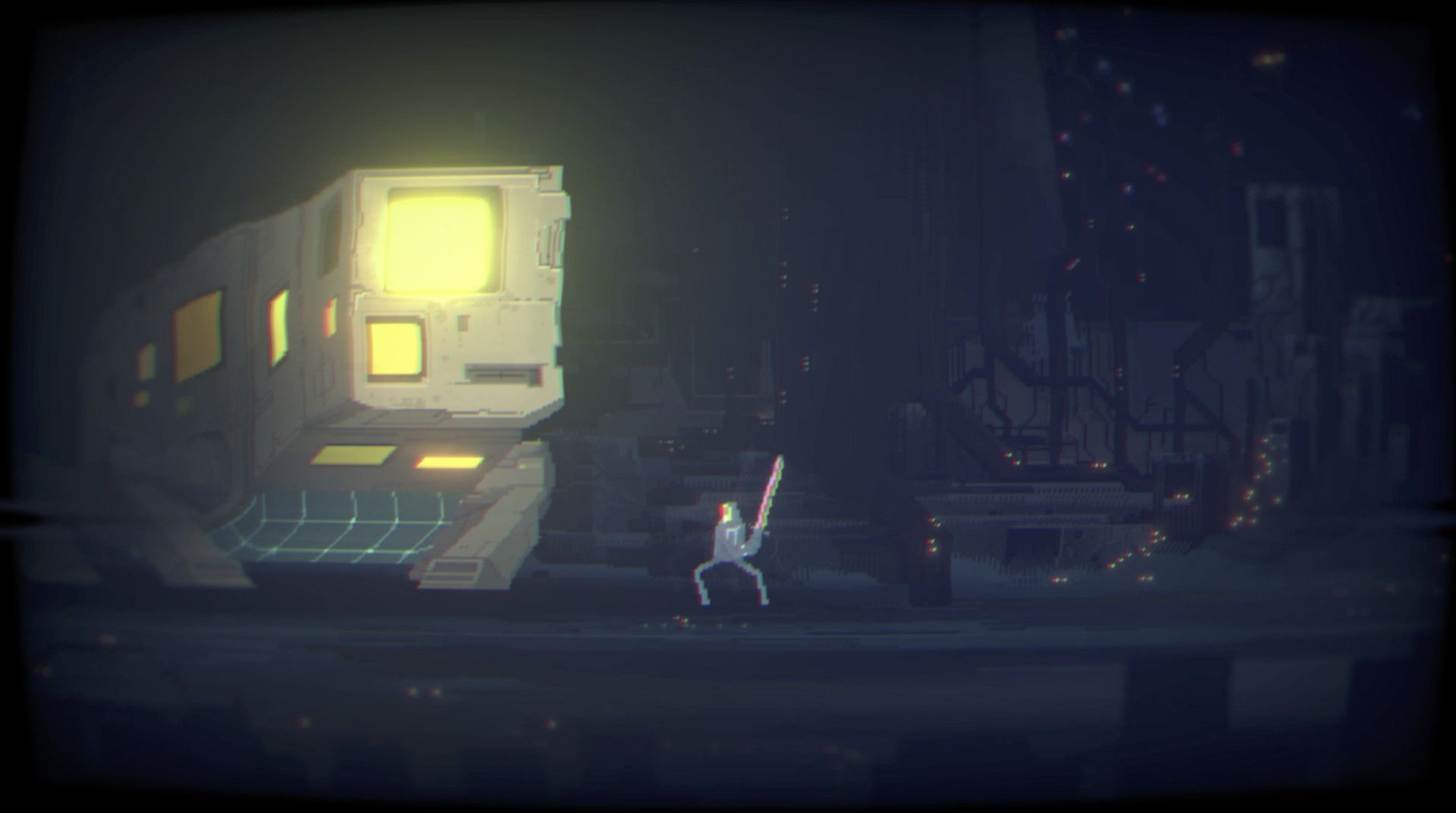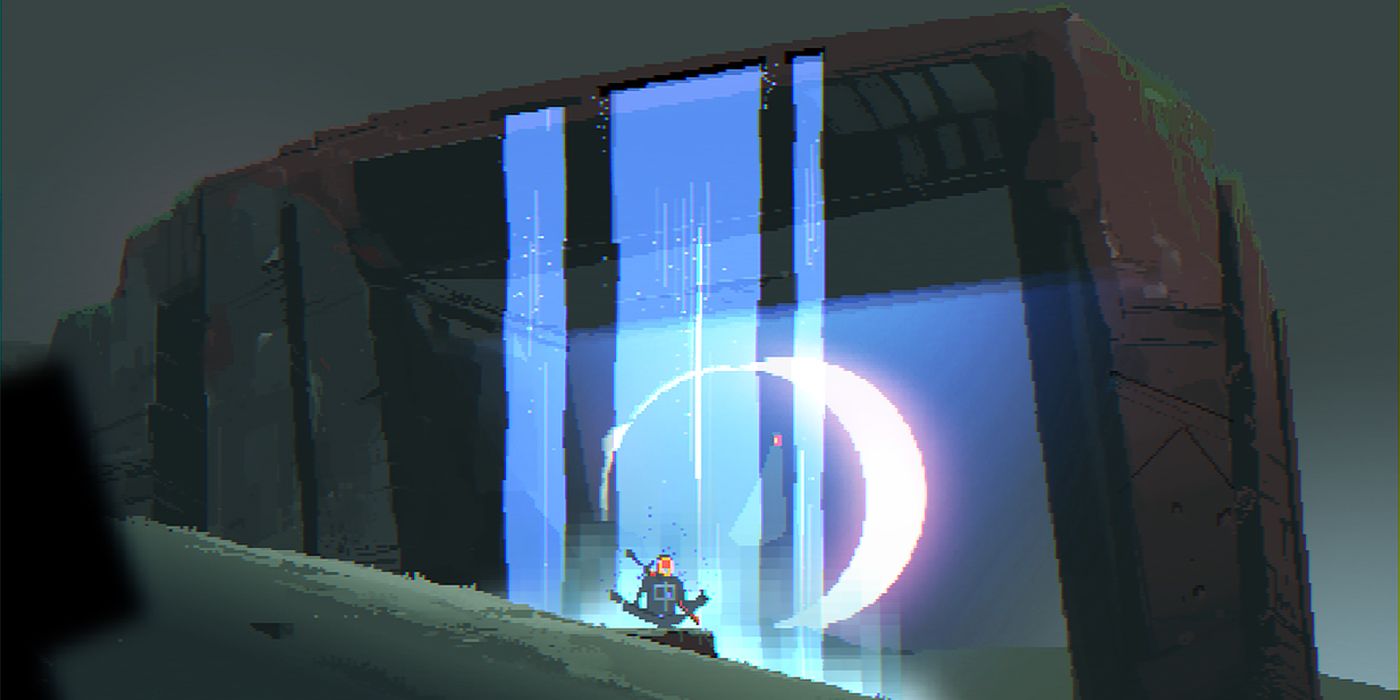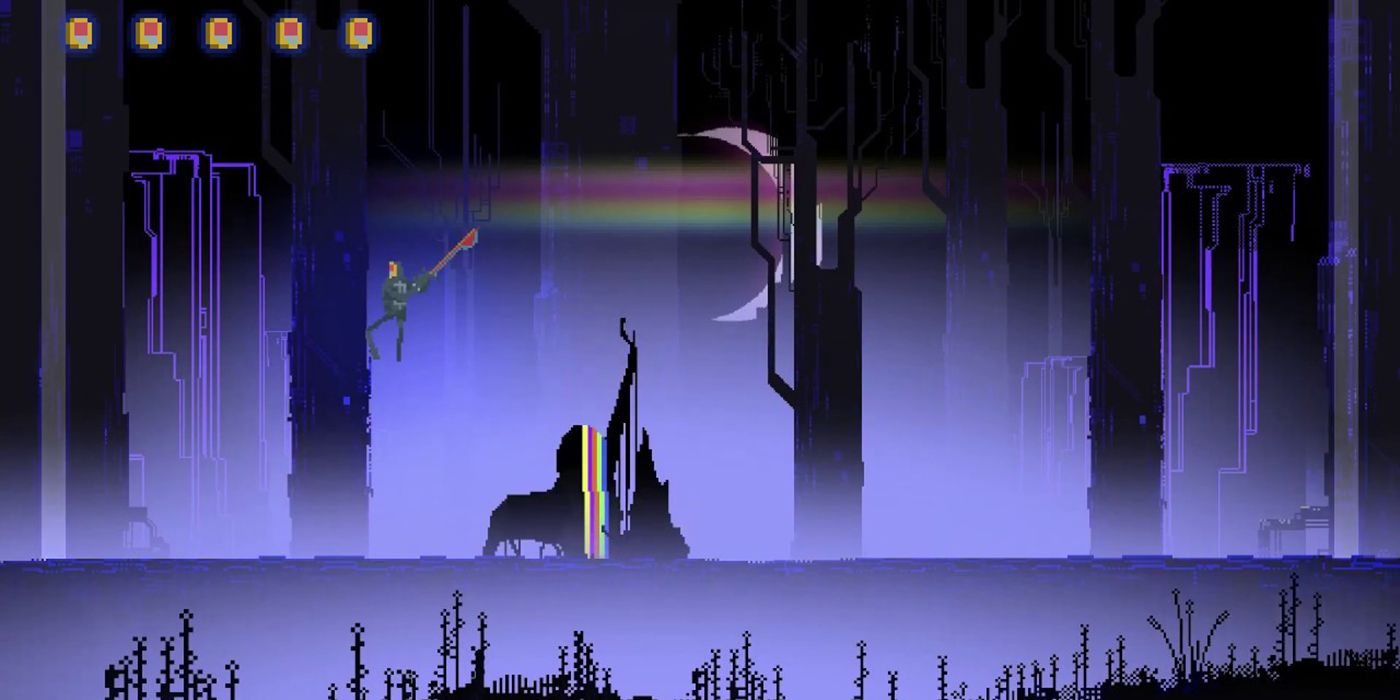Game Rant recently chatted with Eduardo Fornieles, creative director and CEO of Studio Koba, to discuss the developer's maiden voyage: Narita Boy. The synthwave, indie platformer draws from a broad host of disparate influences, including Metroidvanias, the musical duo Daft Punk, and the artist Moebius. However, the game has a particular fondness for the 1980s. Tron, He-Man, Heavy Metal magazine, Neuromancer, and Ready Player One are all major touchstones in Narita Boy's development.
The trouble with period-specific homages, however, is that it is very easy for them to feel stunted compared to modern offerings. One of the ways Studio Koba is confronting that problem is by surprising players with an experience that goes beyond a period piece. Rather than merely taking players back to the 80s, they invite players to take part in a world were the aspirational aspects of the 80s are still ongoing and bolstered by modern development tools, techniques, and themes. In certain respects, Narita Boy represents the 1980s dreams of the future made real. This sort of alternate-universe thought experiment pervades the entirety of the game, extending to it's unique, synthwave soundtrack.
Before detailing how the game transcends its trappings, another question looms before Narita Boy. What is it about the 80s that holds such tremendous appeal, both to Studio Koba, and to gamers as a whole?
Themes With Timeless Appeal
When asked how Studio Koba would make 80s themes feel fresh and relevant while staying true to the time period, Fornieles had this to say:
"The plot, the premise, the context is very ‘80s. The great themes of empowerment, He-Man, the computer/video game guru designer, the game within the game, Tron, Captain N – all of these are in there. All these good ideas coming from the ‘80s are our support to start creating our own story and characters."
This answer suggests the heroic themes present in 80s fiction—the outcast nerds and geeks reframed as heroes, the escape to other more exciting, adjacent realities—are the source of the period's appeal. But rather than the main event, Narita Boy aims to use those 80s tropes as a starting point for a contemporary experience. What would an '80s story' look like in 2021? What has changed? What remains the same in both time frames?
Fornieles stated that not everything from that time period translated well to development. He acknowledged certain aspects of gameplay from the 80s couldn't be incorporated into the game. But given some of the pitfalls of 80s video game design, those concessions to modernity are probably for the best.
Universality as a Means of Surprise
Studio Koba realizes that references alone cannot carry a story or a game, for that matter. Fornieles continued, explaining:
"What we tried to create is a B-side reality where our characters are part of that ‘80s culture, yet beyond all these ‘80s mythomaniac elements we are developing universal themes like childhood and imagination, pain, death, nostalgia, and family. When you finish the game you might not think about the 80s, the cultural references, but instead about the story you just finished, and we hope players keep that story, our game, in their mind for a while."
A narrative is nothing without an emotional core. The trappings of the 80s, 'the context,' as Fornieles puts it, is almost a benevolent Trojan for the game's universal themes. Rather than focusing on specific mechanical conventions, Studio Koba seeks to surprise players. Everything in the game is calculated to deliver a universal narrative that keeps the player hungry to know what happens next, with developments that will stick with players for a long time.
A Good Nostalgia Trip
The phrase "nostalgia trip" is often invoked with ironic positivity or as an outright pejorative. And understandably so, as nostalgia can be weaponized easily, appealing to players sense of simpler times. In contrast, if a nostalgia trip is sufficiently "authentic," it is blessed with the title of "period piece" instead and recognized as art. But there is a third path. An experience that gleefully reimagines the good parts of the past, and brings them to the present for others to experience. Nostalgia trips need not be inherently crass or shallow.
The distinction likely lies in translation. A good, 80s-inspired title will appeal to audiences who have only experienced the era secondhand, if at all. And Studio Koba's emphasis on emotional storytelling that focuses on universal themes seems like a sound path to that kind of reflection.
Narita Boy is available now for Mac, Linux, PC, PlayStation 4, Switch, and Xbox One.




